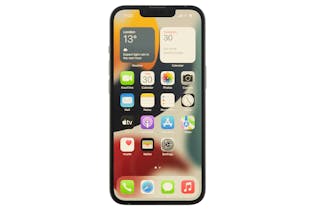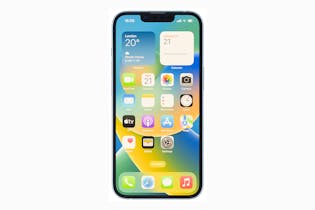Smartphone security: Which phones are supported the longest?

A lack of software support can cut short a phone’s lifespan, even if it’s still functioning perfectly. What’s more, different phone brands have radically divergent approaches to software updates.
When you’re buying a phone, you want to know how long you’ll be able to use it for. Physical factors like durability and repairability are a part of that, but ongoing software support, where a phone receives updates after sale to keep it protected and modern, is crucial too.

Security updates and operating system upgrades
Tech devices receive two types of update.
Operating system (OS) upgrades improve how the device works by adding new features to the software or fixing features that weren’t working properly. These upgrades are larger, so can take a while to download and install, and they might change how your phone looks and feels to use. Each year, the biggest improvements happen when the new major versions of Android and iOS are released. For example, many phones have recently updated from Android 14 to Android 15, which was released in October.
Security updates or patches are smaller downloads that fix vulnerabilities and errors in the software to keep your data safe. Without them, cybercriminals may be able to breach your privacy and access sensitive information such as your passwords, contacts and photos, which they might sell or use to commit fraud. Security updates happen more regularly as issues arise and are relatively quick and easy to install.
It’s always nice to have the newest features, so OS version upgrades should be a consideration when you’re buying a new phone. But security updates are far more important because they dictate whether a phone is safe to use. Once your phone stops receiving security support, it’s time to get a new one. So, it’s crucial to know upfront how many years you’ll get from your purchase – especially if you’re buying a secondhand model.
Brands now make support commitments
Throughout the (short) history of smartphones, consumers have had to rely on manufacturers bestowing software updates when they felt like it. The first two iPhones were each supported for less than 3 years. Other brands seemed to release updates on a whim and to no particular schedule.
However, in the last few years, manufacturers and sellers have seen increased pressure from consumers and regulators, particularly in Europe. Customers are finally starting to buy based on how long devices will last and are demanding to know – up front – how many years they’ll get from their significant purchase.
Sensing a marketing opportunity in the extra demand, companies have begun making official commitments as to how long they’ll support their phones (both for OS version upgrades and security patches). Some are aggressively jostling to be the brand with the best promises. Who wins from all that competition? The consumers.
Support varies by brand
Samsung
Samsung operates a progressive update policy where expensive phones are supported for the longest, topping out at 7 years. For instance, the Galaxy S25 series, which released in January 2025, will continue receiving security updates until 2032. The 7-year promise also applies to Samsung’s Galaxy Z foldable phones.
Getting that much continuous use out of one phone might be unlikely, but it’s fantastic to know that if you manage it, Samsung will keep you safe.
Perhaps more importantly, it makes Galaxy S and Z phones a hot commodity on the secondhand market, because there’ll be enough time on the clock for a second user to get a few years from it. That’s good for the bargain hunters of the future, and it improves resale value for people who buy new.
Samsung’s cheaper A series has a generous support policy too. Starting in 2024, all new A series phones are supported for 5 years, right down to the $400 Galaxy A15. Even customers that don’t want to throw $1,000 at a smartphone will be able to rely on their device for half a decade.
Google’s Pixel phones are available in New Zealand but not through official channels, so we won’t discuss them for long. However, they’re an important piece of the wider puzzle. Locked in a one-up battle with Samsung, Google was first to promise 7 years of support, which now seems to have settled as the farthest either company is willing to go.
Apple
A slightly mysterious case, Apple has few guarantees for how long it will support its iPhones, but a record that speaks for itself.
Prior to Samsung and Google’s blitz, Apple enjoyed a period of nearly a decade where it was the de facto leader in this space, regularly supporting its iPhones for 6 years and sometimes longer. For example, the iPhone 6s, launched in 2015, remained on security support until July 2024 – a mammoth lifespan of 8 years and 10 months.
Apple enjoys the unique benefit of having exclusive control over the operating system on its phones. While the creators of Android have many stakeholders to keep happy, Apple’s iOS is developed for iPhones only, which could be part of the reason that Apple is able to push out updates to older phones.
But perplexingly, Apple is not interested in making promises. Until 2024, iPhones weren’t sold with any guarantee of support for a particular amount of time. Statements of compliance with UK regulation reveal that the iPhone 15 and 16 series will be supported for at least 5 years (until 2028 and 2029, respectively). However, outside of the UK jurisdiction, it isn’t clear if the same promise applies.
In all probability, buying an iPhone will get you a phone that lasts for a long time – but unlike when you buy a premium Samsung or Google phone, you can’t be certain.
Oppo
New Zealand’s largest challenger phone brand, Oppo, reflects the wider smartphone market in that it fails to keep pace with Samsung’s and Google’s support policies.
Like most brands that cover the breadth of the market, the duration of Oppo’s software support depends on the cost of the phone.
Most Oppo devices, including the mid-range Reno and premium Find series, receive security support for 4 years. Phones from the budget A series only receive 2 years of support, making them near worthless to buy secondhand or even on clearance.
Managing director of Oppo New Zealand, Morgan Halim, expects those policies to improve in the future.
“I think what’s important is continuous improvement. It’s not perfect right now, but Oppo is working with partners like the Android team at Google and chipset manufacturers to say, how can we do this better?”
We collate the data into one place
We’ve collected as much information as possible about the software support offered by Samsung, Apple and Oppo as well as others like Xiaomi and Motorola.
Most of this data is publicly available in some form, but it’s impractical for the average consumer to undertake hours of research into software policies before buying a phone. Plus, because the support countdown starts the moment a model is first released (rather than when you buy it), the calculus becomes more complex.
We’re now able to estimate the support end dates for nearly all the smartphones sold in New Zealand and publish this crucial information alongside our smartphones test results. Next time you’re in the market for a phone, remember to check how long the model you’re looking at has on the clock.
In the meantime, here’s a summary covering the most popular models on the market.
And, if you’re looking at an older model that’s no longer sold in stores, here are some secondhand options and when they’ll stop receiving updates.
Has your phone aged out of security support?
Our advice is to replace it as soon as possible to keep yourself safe. We think it’s good for consumers to push back on tech companies’ assumptions that we’ll all buy a new phone every 3 years. But we don’t think putting yourself at risk is the way to do it.
It’s not necessarily a clear-cut issue, though. If you’re not using the internet or downloading apps, your risk is much lower.
“We can’t ask someone that’s just using their phone for emergency calling and messages to upgrade every 5 years”, said Morgan from Oppo New Zealand. “I think it’s up to consumer choice, but ideally, as a manufacturer, it’s not recommended.”
If you do have to get rid of your phone, try to trade it in. All three major mobile providers have trade-in programmes, and so do a few retailers. You might get a nominal amount of money back, but even if you don't, they should at least recycle it for you.
We've tested 187 mobile phones.
Find the right one for you.



Member comments
Get access to comment